Exploring the Deepest Region of the Oceans and the Helpful Creatures That Call the Hadal Home
Orange, blue, and white bacteria blanketed rocks and boulders at 7,000 meters (~23,000 feet) deep in the Indian Ocean’s Java Trench. Dr. Alan Jamieson glided past the life-covered geology in a submersible during his first in-person trip to the hadal zone—the deepest region of the sea—after more than a decade of studying it remotely.
Sea sponges hung like bats in a cave off the gnarly seafloor, sometimes rising over the top of Jamieson’s submersible. The sub climbed an incline, its LED lights cutting through total darkness, and Jamieson and his co-pilot watched a nearly translucent snailfish swim beneath them. There was no record of a snailfish in the Indian Ocean, let alone at these depths.
As the fish went about its life, Jamieson wondered at both the tranquil normalcy of this foreign underwater world and the surrealness of him in it.
“I’m just thinking, ‘That’s weird we’re both going up a hill on a Tuesday afternoon,’” recalls Jamieson, professor at The Oceans Institute and the School of Biological Sciences at the University of Western Australia.
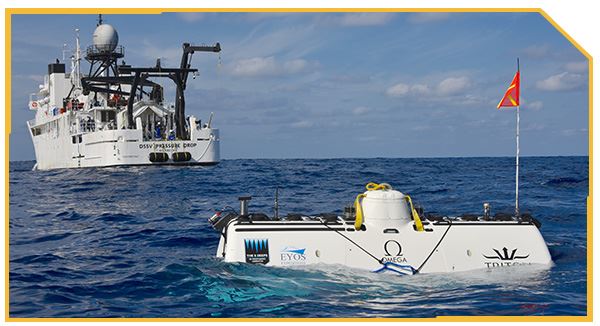
Beyond the abyssal plains, which end at 6,000 meters (~19,700 feet), the hadal zones are the least explored places on Earth. Jamieson is one of the few humans who have ever been to these deepest of waters, where sunlight does not reach, temperatures barely rise above freezing, and pressure can be 1,000 times greater than at the surface.1
Jamieson has personally been to depths of 10,000 meters twice. The deepest known point in the ocean is the Challenger Deep, in the Mariana Trench of the western Pacific, at 10,994 meters (36,070 feet). And though the hadal zone—named after Hades, the Greek god of the underworld—may conjure hellish images of deep-sea creatures, Jamieson says there are no monsters in these deep waters.
Peaceful is the word he uses to describe the dark, cavernous trenches of the hadal, formed when one tectonic plate bumps into and is pushed beneath another.
“The deepest animals on the planet are actiniarians, or sea anemones. They’re like white flowers just swaying in the wind,” Jamieson says. “When you get that deep, it’s not creepy or weird. And some would argue the fish and stuff are actually quite beautiful.”
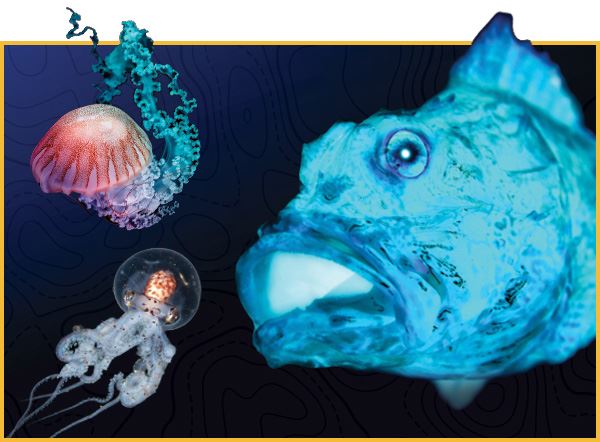
A Psychological Barrier
As a university student, Jamieson never dreamed of going to the bottom of the ocean. He was not even considering a career in marine biology. He liked technical drawing, so he studied industrial design at the Robert Gordon University in Aberdeen, Scotland.
Aberdeen has a major offshore oil and gas industry, so for his final project, Jamieson designed an underwater system similar to the landers he uses in his research today. A lander is a platform that is submerged to the ocean floor, holding scientific instruments to carry out specific remote, underwater missions. About a year after graduating, Professor Imants “Monty” Priede hired him as a mechanical technician. Priede conducted deep-sea research at the University of Aberdeen.
Jamieson found himself on a ship in the North Atlantic, and he enjoyed it. He designed equipment for expeditions going to 6,000 meters, traditionally considered the far edge of the deep sea. Priede encouraged Jamieson to pursue a master’s degree, which led to a Ph.D. in zoology.
As the mechanical engineer learned, he increasingly questioned: “Why do people only ever design instruments that go to 6,000 meters when there are places in the ocean that go to nearly 11,000?”
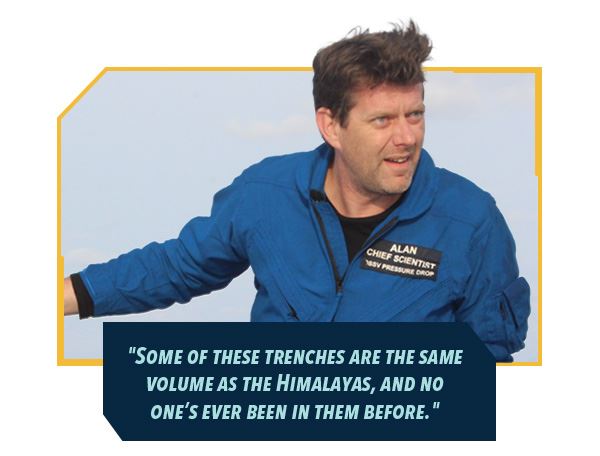
“To me, that didn’t really make sense because it didn’t cost that much more,” Jamieson says. “Why limit yourself?”
He started drawing theoretical designs for a hadal lander—one that could reach 11,000 meters—and met a team of Japanese researchers who encouraged the project. With the lander, they would search for the deepest fish. Priede was supportive but skeptical.
The first hadal lander was not fully assembled until it was on the Hakuho-Maru, a Japanese research ship, cruising somewhere between New Zealand and Tonga. Parts had not arrived on time, and one of the electronics guys was out with a broken arm. Jamieson was on his own.
“I remember it being really stressful,” he says, of that first lander expedition in 2008. “Then we put it down to 6,000 meters, and I thought, ‘Oh, that looks kind of cool!’”
He teased the 6,000-meter line, pushing the lander into the hadal zone on the first day. It was a psychological barrier more than anything, he says. On the second day, they captured images of the deepest fish, a snailfish, found at the time. A couple days later, they sent the lander down to 10,000 meters.
The bridge was quiet when Jamieson fired the lander up off the hadal floor the next morning. He stood alone, communicating with the machine below at 2 a.m. so it would resurface by breakfast.
“You could see it rise off the bottom,” Jamieson says. “That was one of those moments I’ll never forget.
I thought, ‘I’ve managed to fire something down to 10,000 meters.’ It was quite a big thing.”
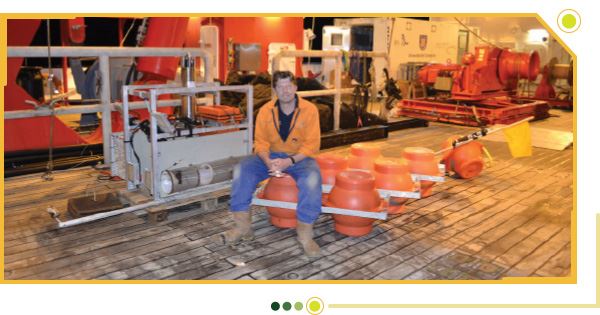
Alan prepares early in the morning for the days’ deep dive. Image Source: Newcastle University, UK
Measuring the Deep
From there, Jamieson did more and more lander drops. At first, he led one or two per month. This past summer, his team completed 91. And, since his first submersible dive in 2019, they now go to the hadal zone themselves.
Each dive and lander mission has specific objectives, from finding the world’s deepest shipwreck to looking for a particular organism. Cameras on the vehicles capture video and still images. The SeaGuard single-point current meter from Aanderaa, a Xylem brand, helps capture—and confirm—information about the environment, including oxygen, salinity, temperature, and depth.
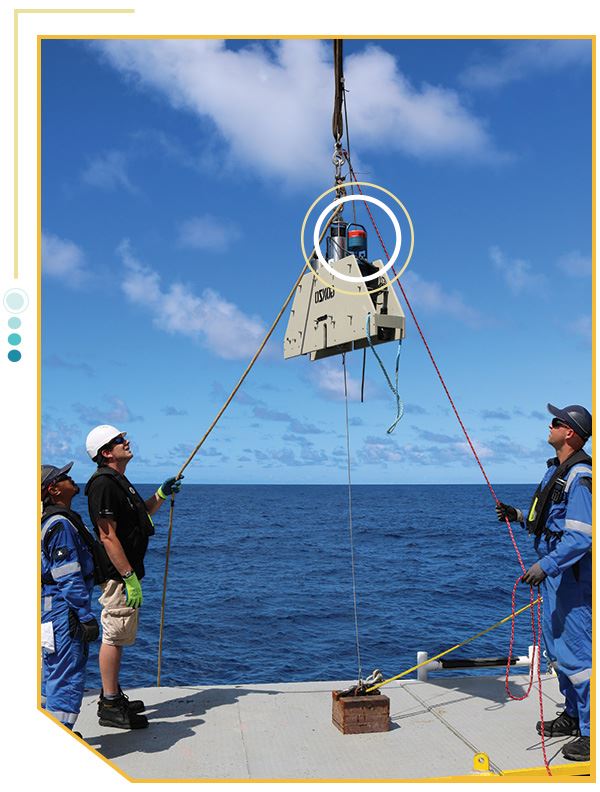
Crewmates deploying the SeaGuard current meter prior to a dive into the depths. Image Source: Newcastle University, UK
The Doppler current sensor, which sends acoustic signals out in four directions, is especially helpful for measuring particles and for sensing irregular movement, such as that from animals.
Because Jamieson is one of few researchers who go to hadal depths, and he has mechanical expertise, he is a valued collaborative partner of Aanderaa.
“Alan is very willing to try new developments that we have and to try to find new ways of getting more certainty to measuring the hadal environment,” says Dr. Anders Tengberg, Aanderaa product manager and scientific advisor.
The challenge for scientific instrumentation, Tengberg says, is pressure. It is easy enough to choose thicker, higher-grade titanium when building instrumentation pressure cases, the standard for hadal-depth Aanderaa products. However, going to such depths requires stringent testing to ensure the sensors respond correctly under such great pressure. To ensure accurate readings, Aanderaa works with Jamieson, whose research provides the longer deployments, longer experiments, and natural environment needed to adequately test hadal instrumentation.
Under Pressure
Beneath the first 1,000 meters, salinity, temperature, and oxygen levels hold relatively stable, Jamieson says. However, carbon compensation depth, a combination of seawater chemistry and pressure, changes significantly around 4,500 to 5,000 meters.
Animals, like snails, that use calcium carbonate to create hard shells in waters shallower than 5,000 meters cannot do so at lower depths. Snails appear below 5,000 meters with the same shells, but if you were to touch them, they would feel like wet paper.
Animals in the hadal zone have evolved in other ways to fit their harsh environment. They do not have gas bladders or other gas cavities. They also produce a chemical, trimethylamine N-oxide, or TMAO, that counteracts the pressure that otherwise would crush their spherical cells.
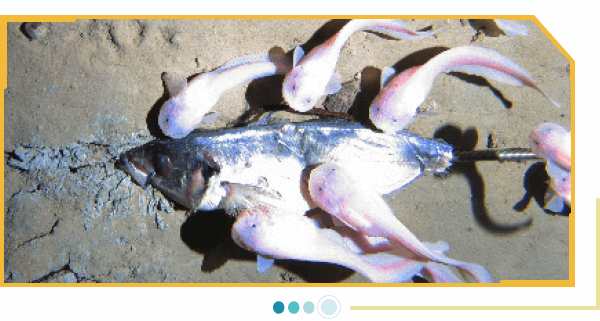
Snailfish feasting on the ocean floor. Image Source: Oceanlab, University of Aberdeen, UK
In 2022, Jamieson broke his previous records by capturing video of the deepest fish, another snailfish, at 8,336 meters. Data suggests it is impossible to find a fish much deeper than 8,300 meters, when TMAO reaches its saturation point.
But there is life deeper still, much of it anchored to the ocean floor, like the meadows of yellow sea lilies, which are actually crinoids, a relative to starfish and urchins, at 9,500 meters deep off the western coast of Japan.
“What they’re doing is using crazy combinations of different osmolytes [molecules that protect cells in high-stress situations], maybe five or six different ones,” Jamieson says. “No one really understands quite why. I suspect a lot of the really deep fauna are byproducts of something else. They’ve evolved to do something else, and it’s happened to give them ridiculous pressure tolerance.”
Going to The Hadal
Mornings begin early, at about 4 a.m., on days Alan Jamieson dives to the deepest part of the ocean. He and his co-pilot don multiple layers and what Jamieson calls anti-inflammable “goon suits” to stay warm at less than 2 ºC (35.6 ºF).
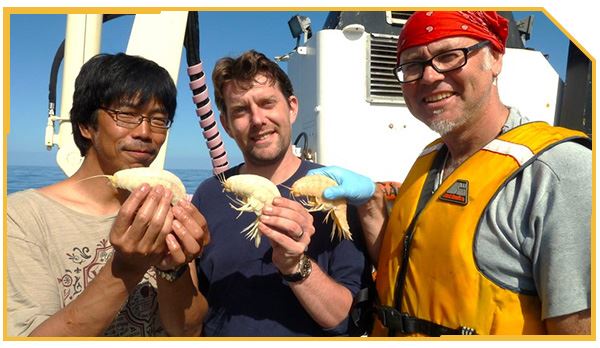
Toyo Fujii, Alan Jamieson (University of Aberdeen) and Ashley Rowden (NIWA) showcasing recently discovered supergiant amphipods. Image Credit: Oceanlab, University of Aberdeen, UK
They load their pockets with sustenance for the 12-hour expedition: two espressos loaded with sugar in 50 mL test tubes and a few snacks. Then they climb down a narrow turret into the submersible, which barely has room for two.
Because seawater density increases with depth, the submersible is loaded down with enough steel weights to achieve neutrality in the hadal zone. Jamieson and his co-pilot mentally prepare for a quick initial drop, then the descent “becomes incredibly graceful,” Jamieson says. The world goes dark, and everything becomes quiet—except the KoRn rock anthems playing in the background. Four hours later, the explorers are at the bottom of the sea.
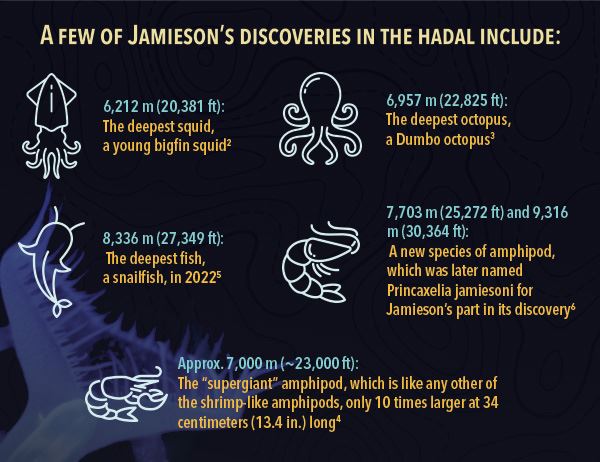
What’s For Dinner?
The true success of the hadal fauna, Jamieson says, is how they survive with such little food.
“Their metabolism is greatly reduced,” he says. “Their ability to eat anything is greatly enhanced.”
The snailfish is nearly transparent because, instead of using energy to make skin and scales, it creates gel, “the cheapest buoyancy you can buy,” Jamieson says. Their bone density is also lower with no gas bladder.
“It’s an engineering challenge when you see an animal and how it survives there,” Jamieson says. “You realized all these different trade-offs they’ve done.”
The hadal fauna do eat, though.
Most nonmoving fauna take in energy from drifting particles of organic matter called marine snow. Some animals filter these particles, which create a fine layer of dust on the sea floor; others turn the sediment over slowly, extracting nutrients.
There are also scavengers waiting for a meal—dead fish, squid, whales, and other larger marine animals—to fall from above. It’s the only time life moves fast in the hadal zone.
“Suddenly, lots of amphipods will appear from nowhere, and they’ll devour this thing, then disappear off into the shadows,” Jamieson says. “And what they’re doing is just recycling carbon. They intercept it, consume it, then distribute it and go on.”
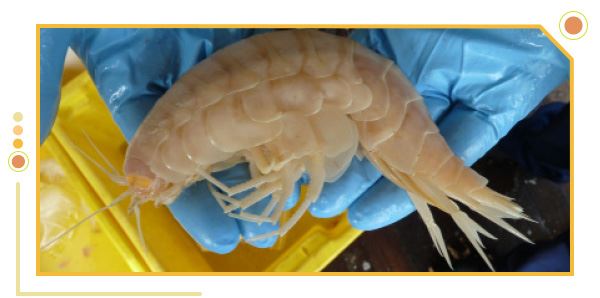
Supergiant Amphipod. Image Source: Oceanlab, University of Aberdeen, UK
Full Circle
The deep, deep sea can be incomprehensible. However, Jamieson hopes to erase the “imaginary line” between the ocean that people relate to and the hadal zone.
“It’s all just one big body of water,” he says. “It’s regulating climate. All the excess heat we’re putting out is being pulled down into the sea. All those little animals filtering, feeding, or scavenging—they’re essentially gardening. They’re stopping the largest ecosystem on the planet from becoming a cesspit.”
Just as the hadal fauna’s food sinks to the bottom of the ocean, so does trash. Jamieson has found plastics in the guts of animals in the world’s deepest trenches. He found polychlorinated biphenyls (PCBs) and polybrominated diphenyls ethers (PBDEs), flame retardants banned in the U.S. in 1979, in every animal sampled from the Mariana Trench, some at concentrations 15 times higher than the worst polluted river in China. During a dive to the Philippine Trench, Jamieson estimates the plastic bag to animal ratio was 10 to 1. 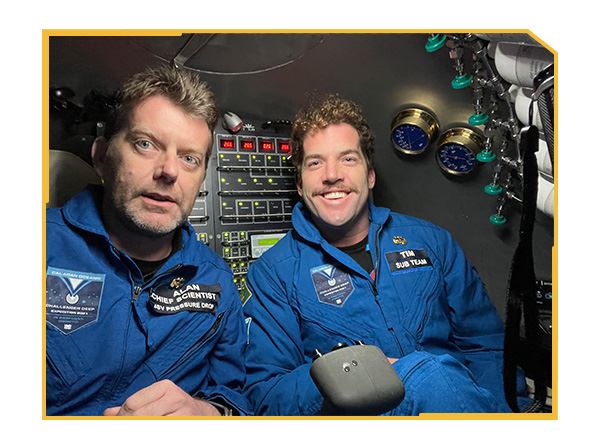
The crew prepare for the long journey to the Hadal. Image Source: Newcastle University, UK
The next 50 years, Jamieson says, will be hard on the deep sea, even if another piece of plastic never reaches the ocean. Whatever is floating now will sink to the bottom, and there is no mechanism for removal.
This is a sad part of the story, Jamieson says, but it illustrates the importance of hadal exploration. Every time he goes there, he sees something new, something that can inspire deeper appreciation for the deepest part of the world.
“We’re not just rewriting the hundredth chapter of the textbook on this,” Jamieson says. “Some of these trenches are the same volume as the Himalayas, and no one’s ever been in them before. That’s the real buzz: getting the cameras down and walking away after a month or two having a hardware full of data and video. That’s cool.”

SOURCES